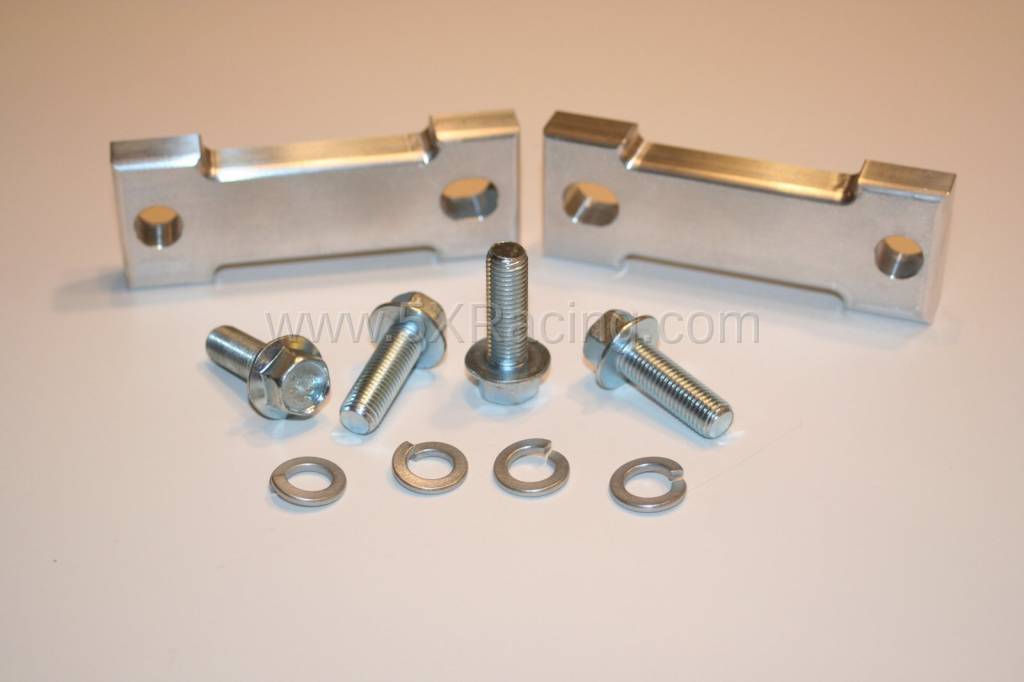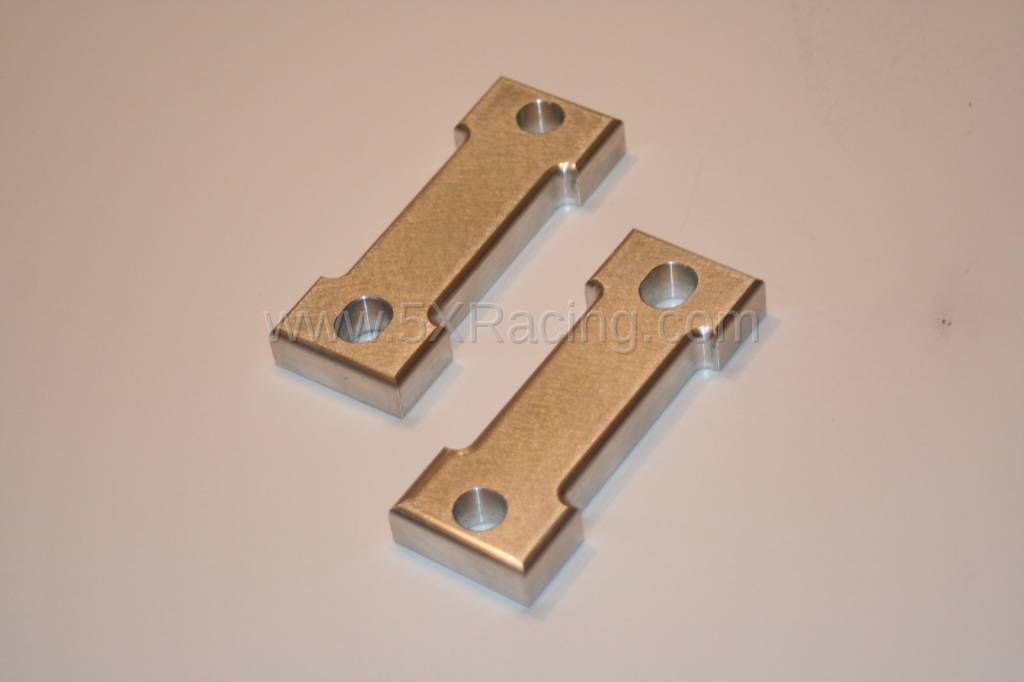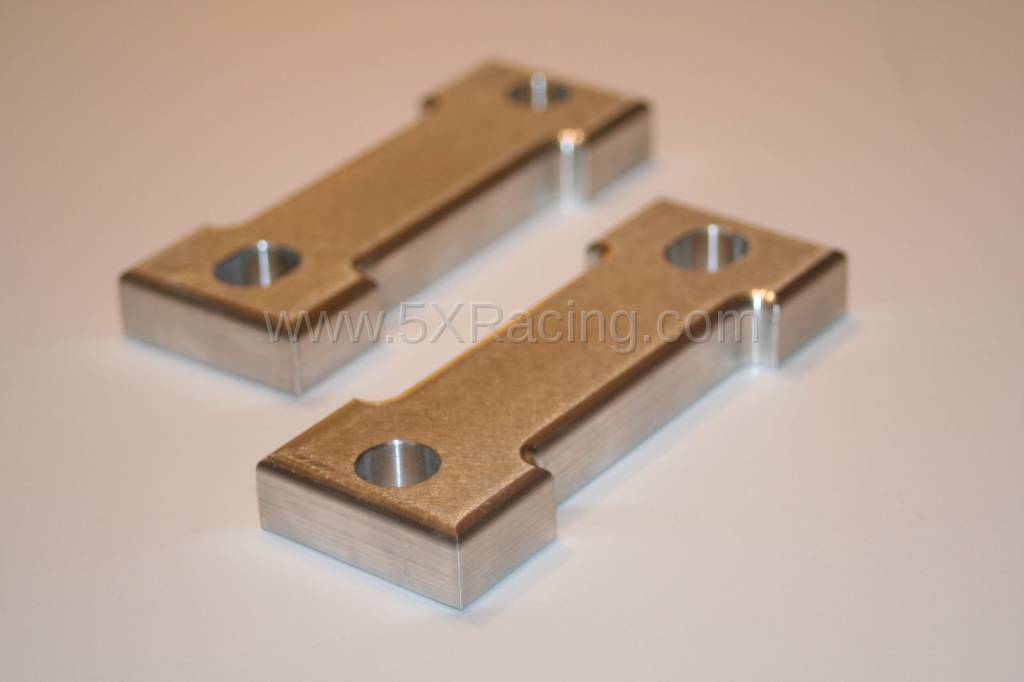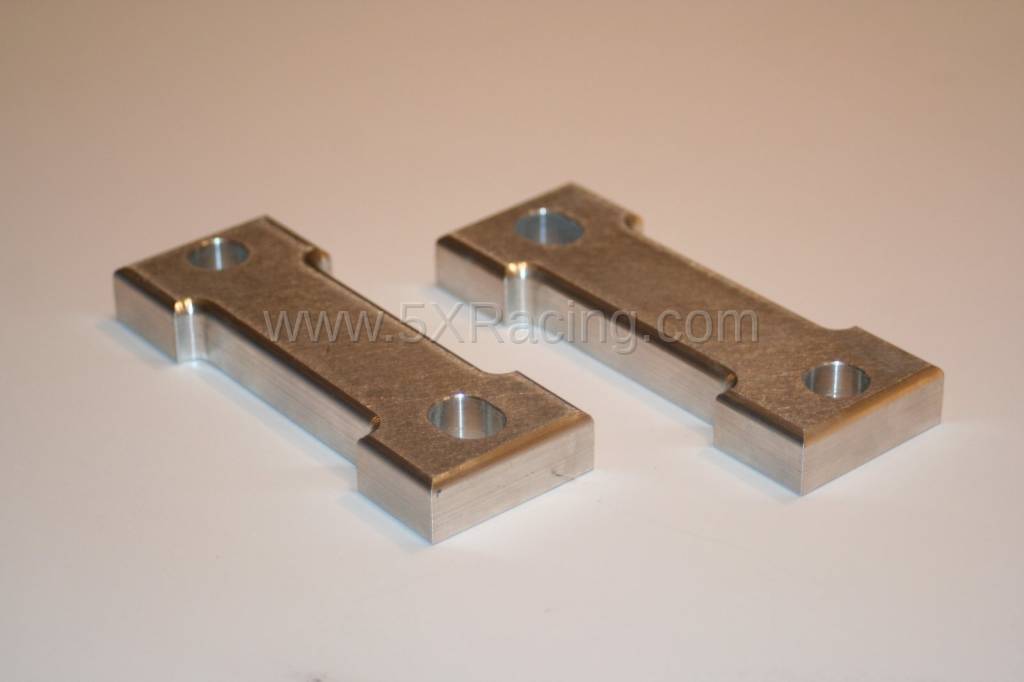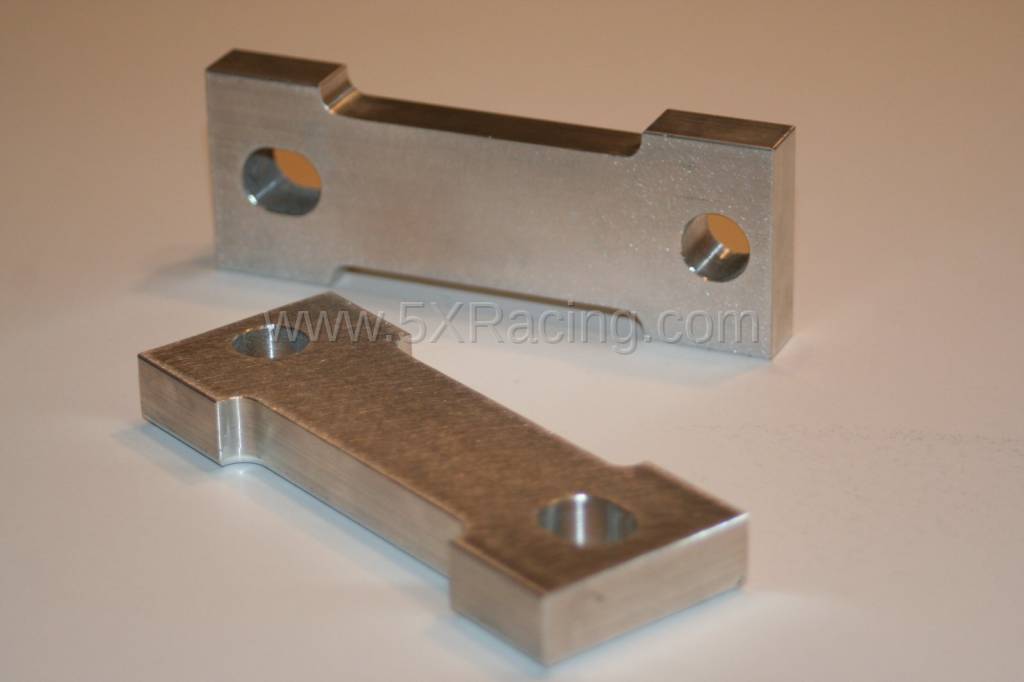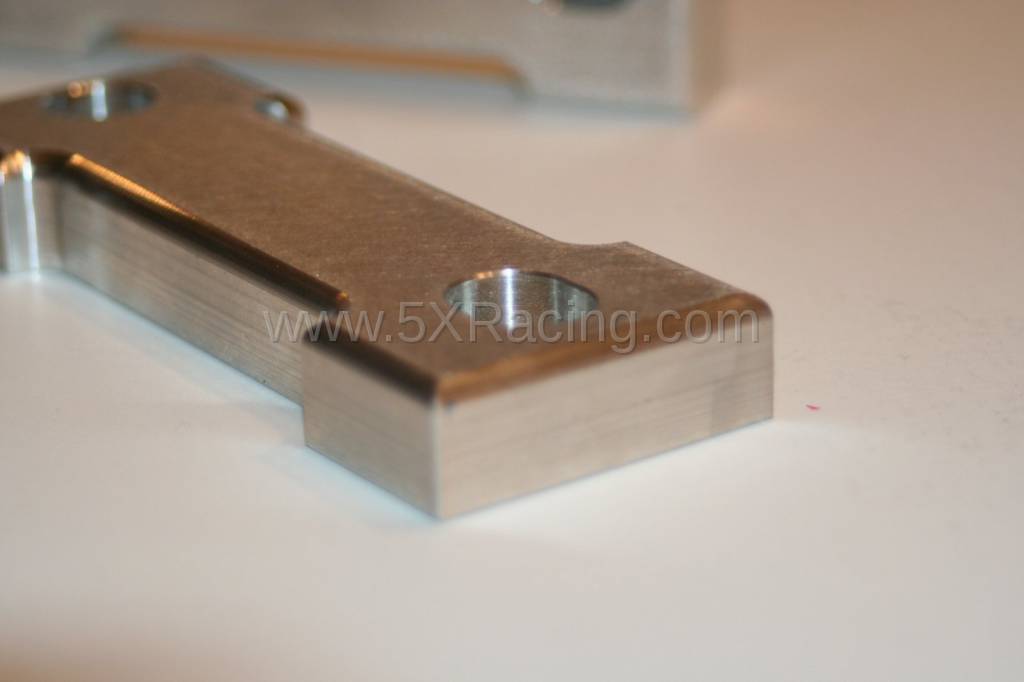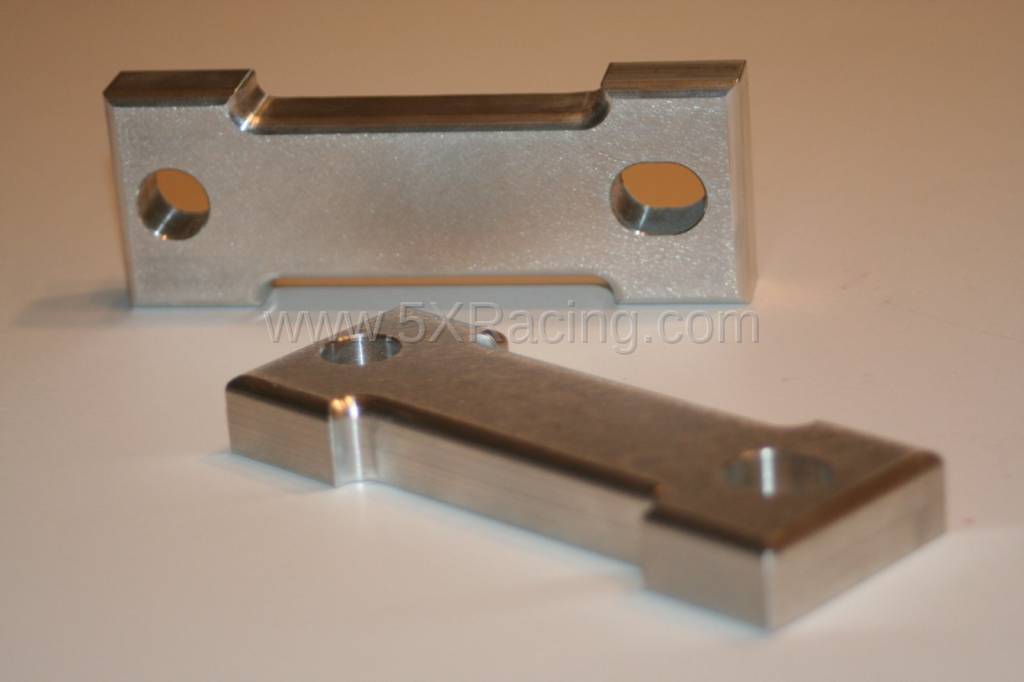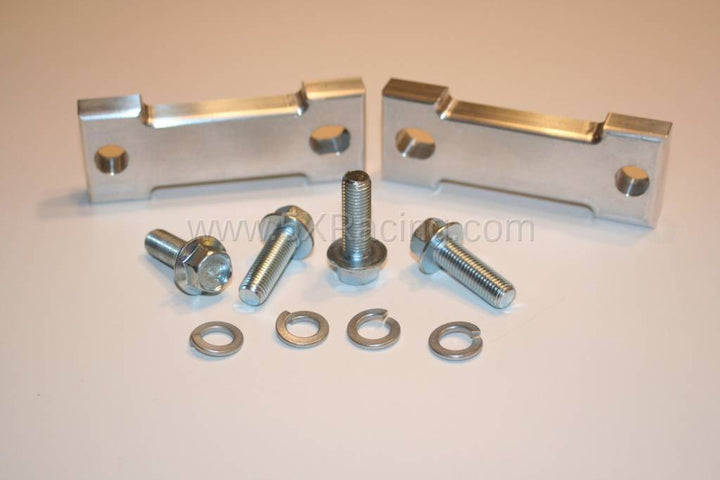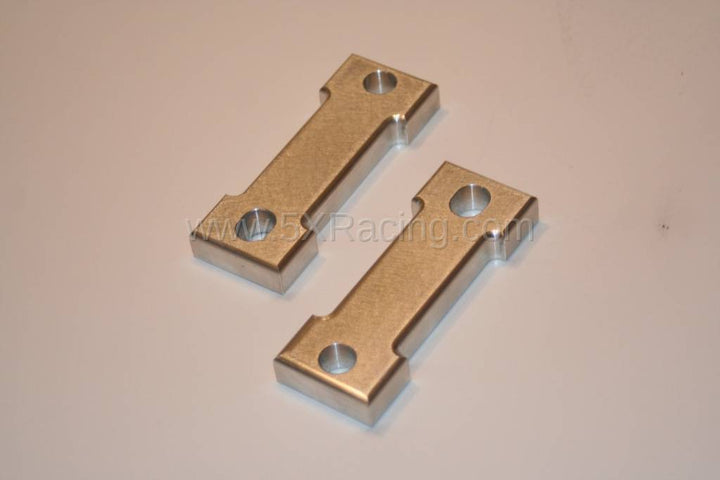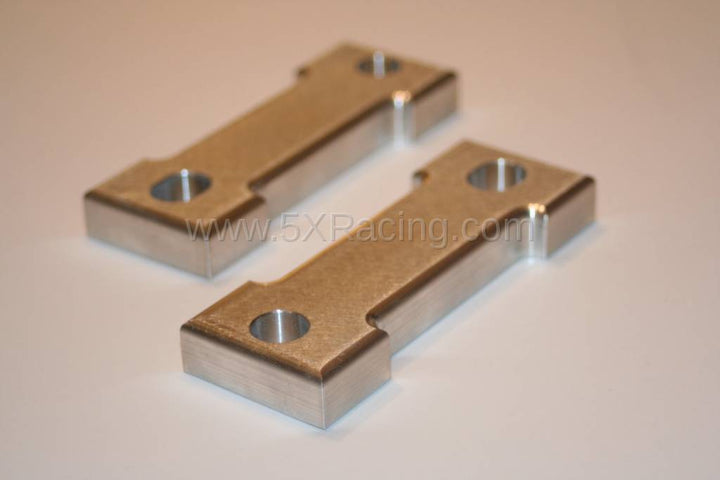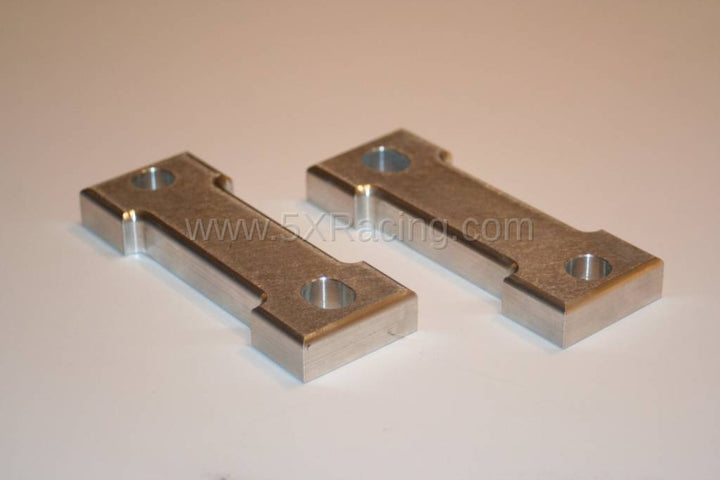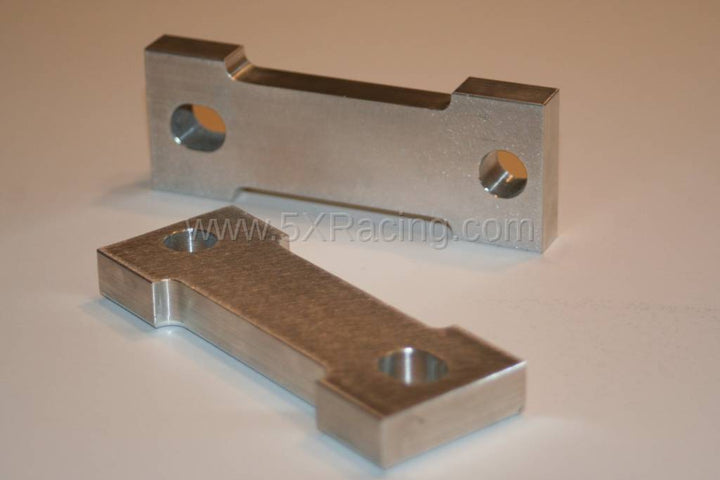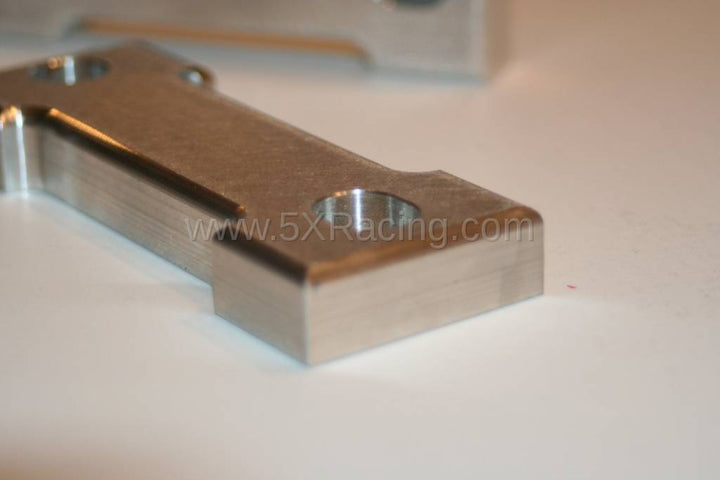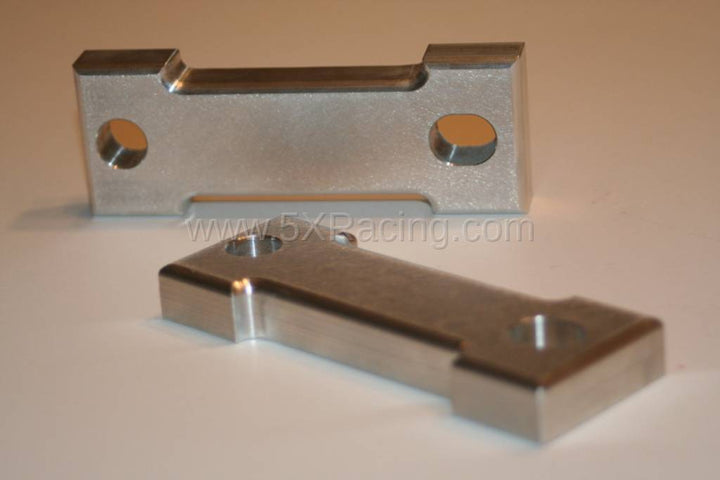We've had a prototype version of these rack spacers on our racecars for years. They've seen the likes of about 5 seasons of Spec Miata racing here in Florida and have never missed a beat, and have even withstood several subframe bending collisions with Sebring's famous walls! We originally built these spacers when the NASA Spec Miata rules began allowing the "shims". The rules read: "Steering rack on 1990-97 cars may be shimmed between the rack and subframe at its two mounting locations. Each rack mount utilizes two bolts; both bolts must pass through each shim at that location. Shims must be the same dimensions and be made from aluminum or steel. Total thickness of shims can not exceed 12.70mm (0.50 inch) in thinness/width". This rule was created to help provide the NA Miata's (90-97) improve their suspension geometry to help equalize them to the superior NB chassis, which has a revised front subframe and steering rack location. Basically, the rack spacers help alleviate "bump steer"
Bump Steer is when your wheels steer themselves without input from the steering wheel. The undesirable steering is caused by bumps in the track interacting with improper length or angle of your suspension and steering linkages. See more about the topic here: http://www.longacreracing.com/technical-articles.aspx?item=8162
While a comprehensive lesson on bumpsteer is beyond the interest level of this product explanation, basically what these rack spacers do is raise the steering rack 1/2" higher on the subframe to reposition the rack higher, therefore correcting the angle of the steering tie-rods on a car that has been lowered. When a car is lowered, the wheel spindle height does not change, but the chassis height does and causes the angle of the steering tie-rods to point up-wards as the chassis is now in a new lower location compared to the spindle steering tie-rod mounting location. When the chassis sees suspension travel from bumps, the tie-rods will "pull" in the wheel spindle, causing "bump steer" (bumpsteer). Bumpsteer is effectively toeing in the front wheels and causing alignment changes, which is not ideal for a racing vehicle. By spacing the rack higher, you now level out the steering tie-rods and help return them closer to the angle in which they were from the factory.
Bump Steer is when your wheels steer themselves without input from the steering wheel. The undesirable steering is caused by bumps in the track interacting with improper length or angle of your suspension and steering linkages. See more about the topic here: http://www.longacreracing.com/technical-articles.aspx?item=8162
While a comprehensive lesson on bumpsteer is beyond the interest level of this product explanation, basically what these rack spacers do is raise the steering rack 1/2" higher on the subframe to reposition the rack higher, therefore correcting the angle of the steering tie-rods on a car that has been lowered. When a car is lowered, the wheel spindle height does not change, but the chassis height does and causes the angle of the steering tie-rods to point up-wards as the chassis is now in a new lower location compared to the spindle steering tie-rod mounting location. When the chassis sees suspension travel from bumps, the tie-rods will "pull" in the wheel spindle, causing "bump steer" (bumpsteer). Bumpsteer is effectively toeing in the front wheels and causing alignment changes, which is not ideal for a racing vehicle. By spacing the rack higher, you now level out the steering tie-rods and help return them closer to the angle in which they were from the factory.


